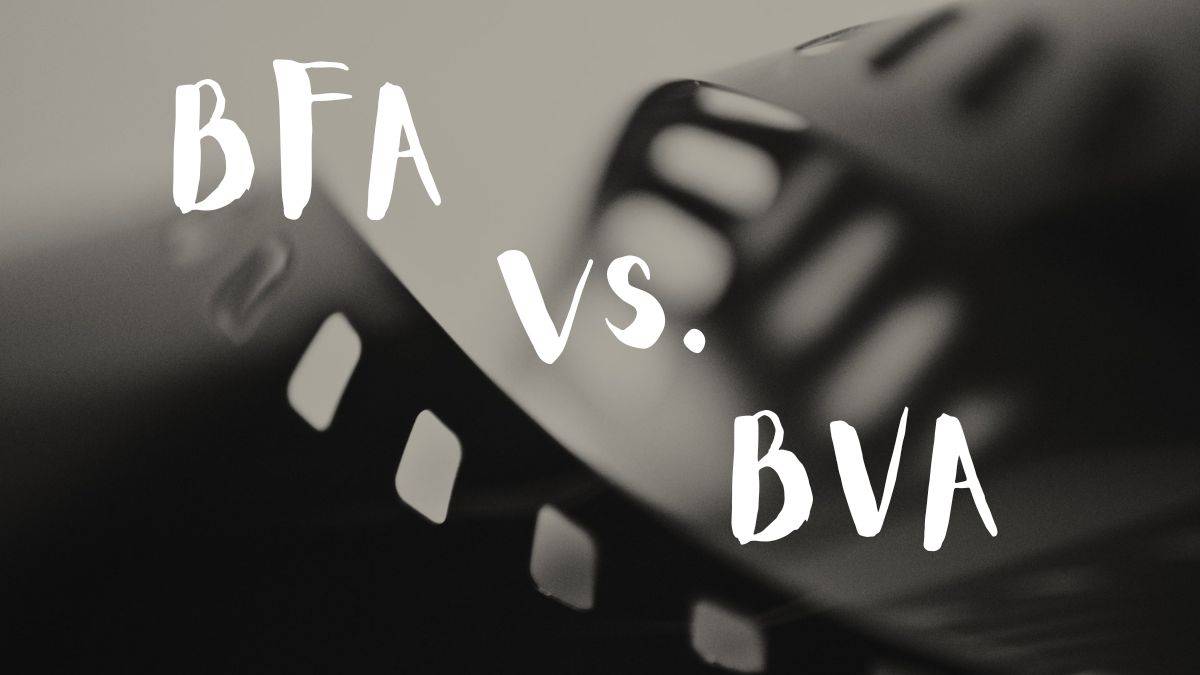BFA vs BVA: Understanding the Differences and Career Opportunities
A visual arts or fine arts degree can be the perfect choice for art lovers who also wish to improve their creative skills. The fine arts and visual arts both give a platform for an artist's interests to be expressed and a chance to share one's individual perception. BFA and BVA are the two degrees that will enable you to gain job-relevant skills. This blog will compare BVA and BFA and the career opportunities that come with each degree as well.
- BFA vs BVA
- What is BFA (Bachelor of Fine Arts)?
- What is BVA (Bachelor of Visual Arts)?
BFA vs BVA
The Fine Arts are usually concerned with the creation of works of art purely for their intellectual or aesthetic value and include activities such as painting, sculpture, and printmaking. Visual Arts covers visual works, including contemporary and applied forms that include graphic design, animation, photography, and digital art.
Thus, while the nature of the course and structure of BFA and BVA degree programs are almost similar, they vary in their focus and course content. Let us understand what the main differences are between them:
| Feature |
BFA |
BVA |
| Full Form |
Bachelor of Fine Arts |
Bachelor of Visual Arts |
| Focus Area |
Traditional and classical modes of expression include painting, sculpture and printmaking. |
Broad spectrum of visual media, including digital art, animation, photography, and design |
| Purpose |
Aesthetic and expressive creation of art |
Applied and contemporary visual communication |
| Curriculum |
Heavily studio-based with theory in art history and aesthetics |
Combines studio practice with design, media, and communication studies |
| Career Paths |
|
|
| Entrance Exams |
KCET, CUET, WUDAT, etc. |
|
| Top Colleges/Universities |
What is BFA (Bachelor of Fine Arts)?
The BFA is a professional undergraduate degree. It is designed to prepare students for a career in fine arts. It is a 4-year degree program which enables students to build a strong foundation in artistic skills, cultivate creativity, expressiveness, and critical thinking. The BFA course consists of
Besides studio work, students also study Indian and international art movements, learn professional ways of presenting their work, and gain insight into the cultural role of art.
Key Highlights
| Duration | 3 - 4 years |
| Eligibility |
|
| Focus Areas | Visual and performing arts |
| Institutions | Offered by fine arts colleges and universities |
Career Opportunities After BFA
| Career Option |
Description |
| Professional Artist (Painter, Sculptor, Printmaker) |
|
| Illustrator or Cartoonist |
|
| Art Teacher / Lecturer |
|
| Gallery Curator / Art Manager |
|
| Set Designer / Stage Artist |
|
| Animator / Multimedia Artist |
|
| Art Conservator / Restorer |
|
| Applied Arts Designer |
|
| Tattoo Artist |
|
| Freelance Creative Professional |
|
Many students pursue advanced courses like an MFA (Master of Fine Arts) to specialize in their area of interest or join academia and research.
What is BVA (Bachelor of Visual Arts)?
The BVA is a 4-year undergraduate degree course that focuses on the visual aspects of arts and design. It can be taken up by those interested in digital arts, design, and multimedia, as well as those aiming to build a creative career in visual communication.
BVA programs combine studio practice and theoretical studies. It covers topics like:
- Graphic Design
- Digital Art & Illustration
- Photography
- Painting and Drawing
- Multimedia and Animation
- Typography
In a BVA course, students will learn how to use both traditional methods and modern digital tools to create artwork that effectively communicates ideas visually. The course also emphasises portfolio development and industry-relevant skills.
Key Highlights
| Duration | 3 - 4 years |
| Eligibility |
|
| Focus Areas | Visual arts and digital media |
| Institutions | Offered by design schools and art colleges |
Career Opportunities After BVA
Listed below are the job roles after a BVA:
| Career Option |
Description |
| Graphic and UI/UX Designer |
|
| Digital Illustrator |
|
| Visual Communication Designer |
|
| Photographer / Videographer |
|
| Advertising and Branding Designer |
|
| Animator / Multimedia Artist |
|
| Exhibition and Display Designer |
|
They can also pursue advanced courses, such as the Master of Visual Arts (MVA), design diplomas, or certifications in digital tools and software.





Rashmi Karan is a writer and editor with more than 15 years of exp., focusing on educational content.
Education: M.Sc. Biotechnology
Experience: 15+ years creating informative and educational content
Spe